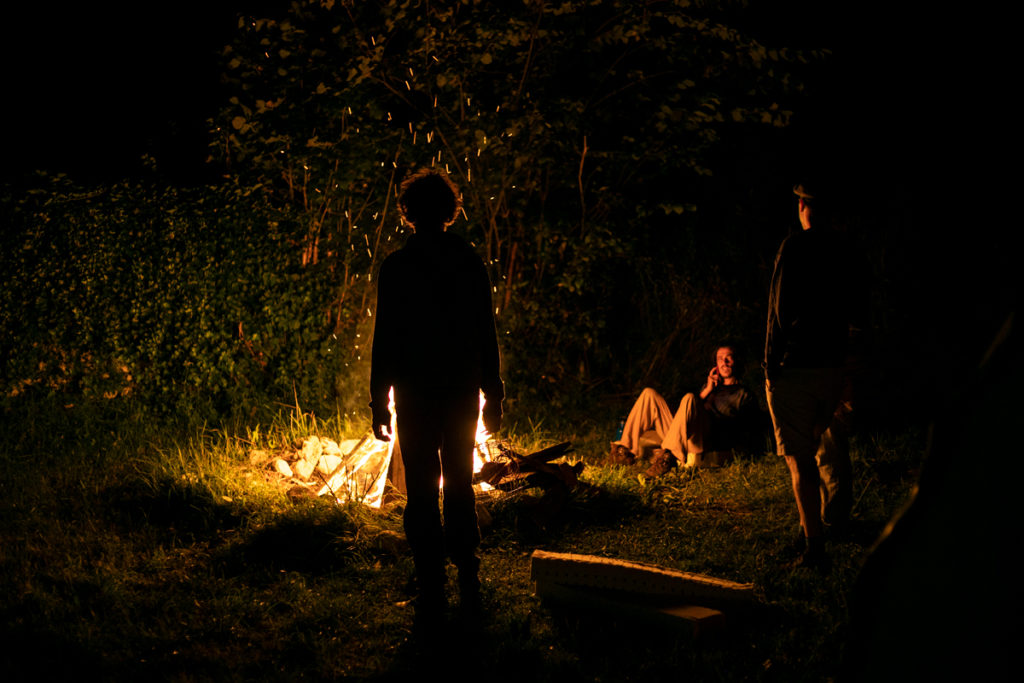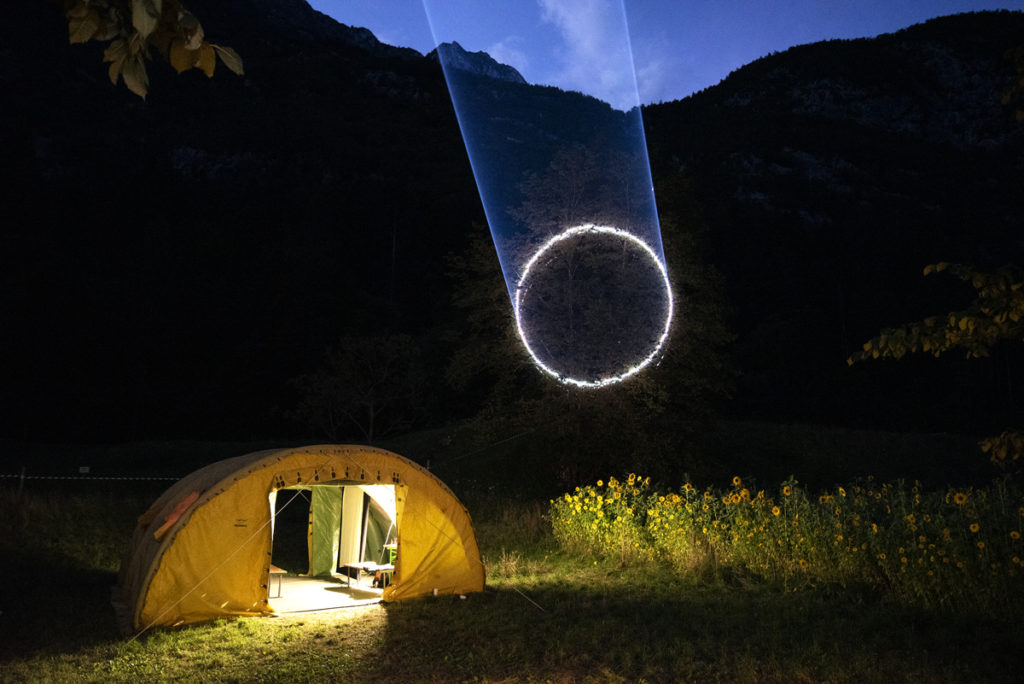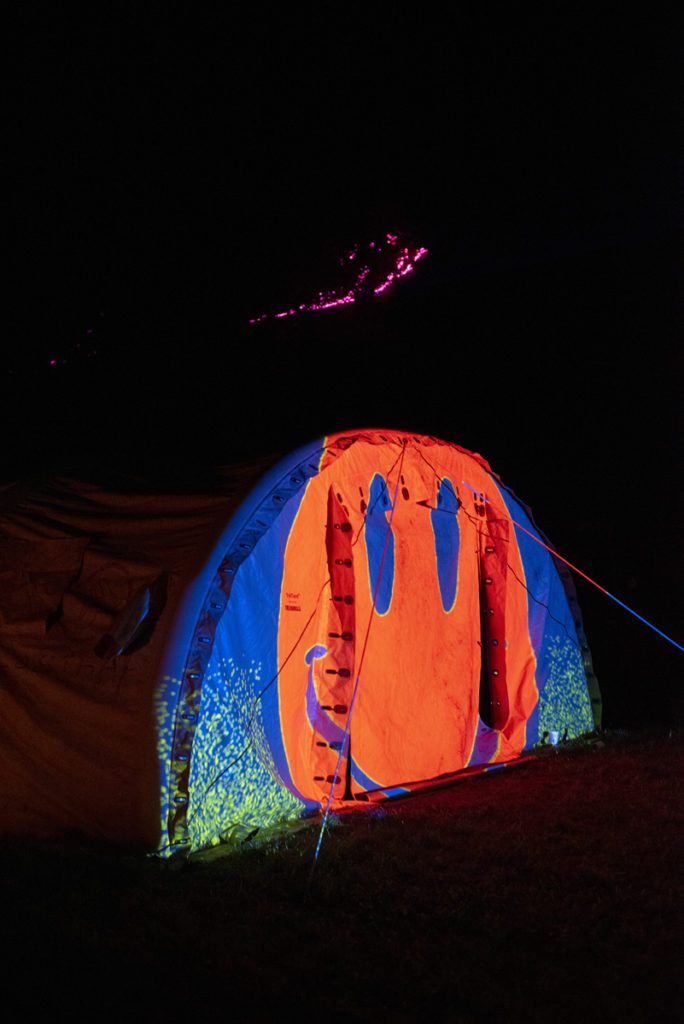Early in the morning, eleven PIFcampers and Dingo the dog set off on an eight-hour hike along the off-road trails of the surrounding peaks. Bernhard lost both soles in mountaineering zeal, but the brave hikers agreed upon their return that the shoes were worth destroying for the stunning view from Čisti vrh.
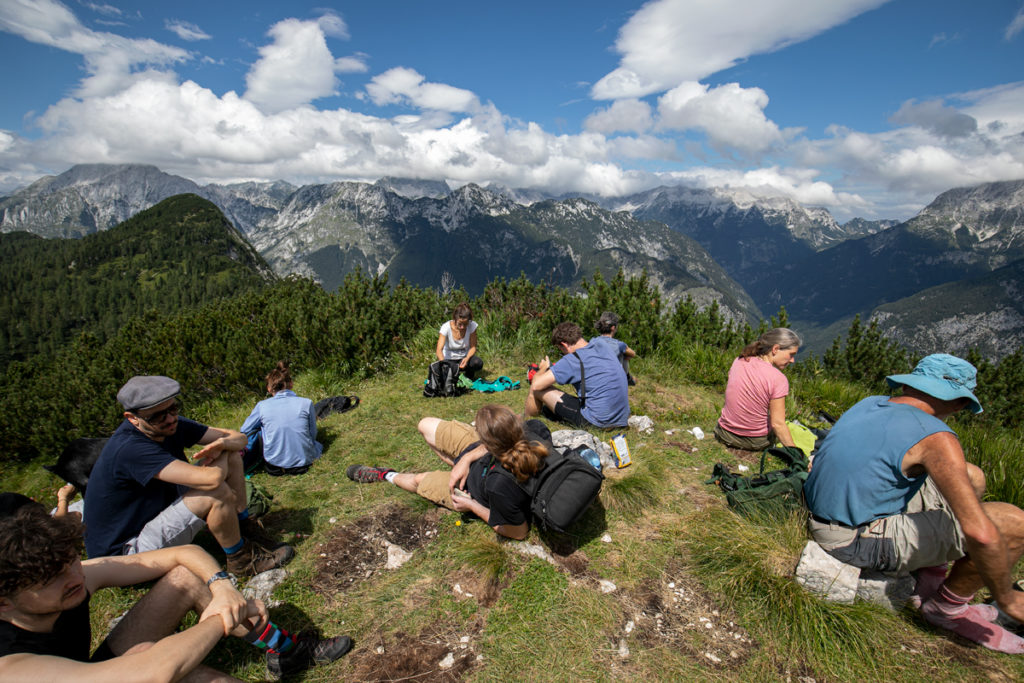
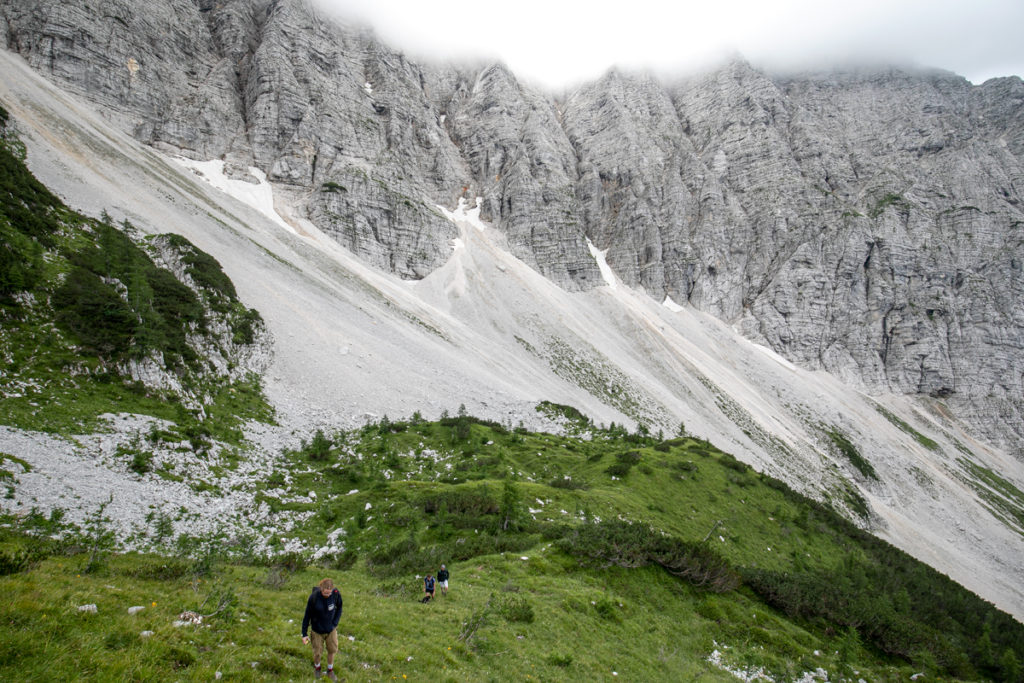
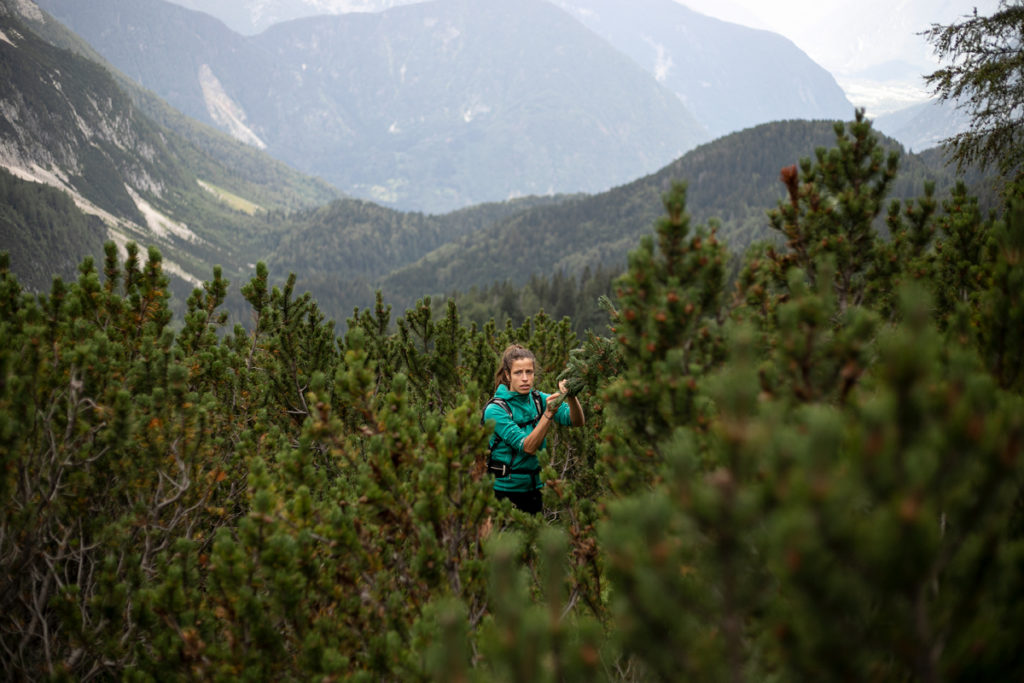
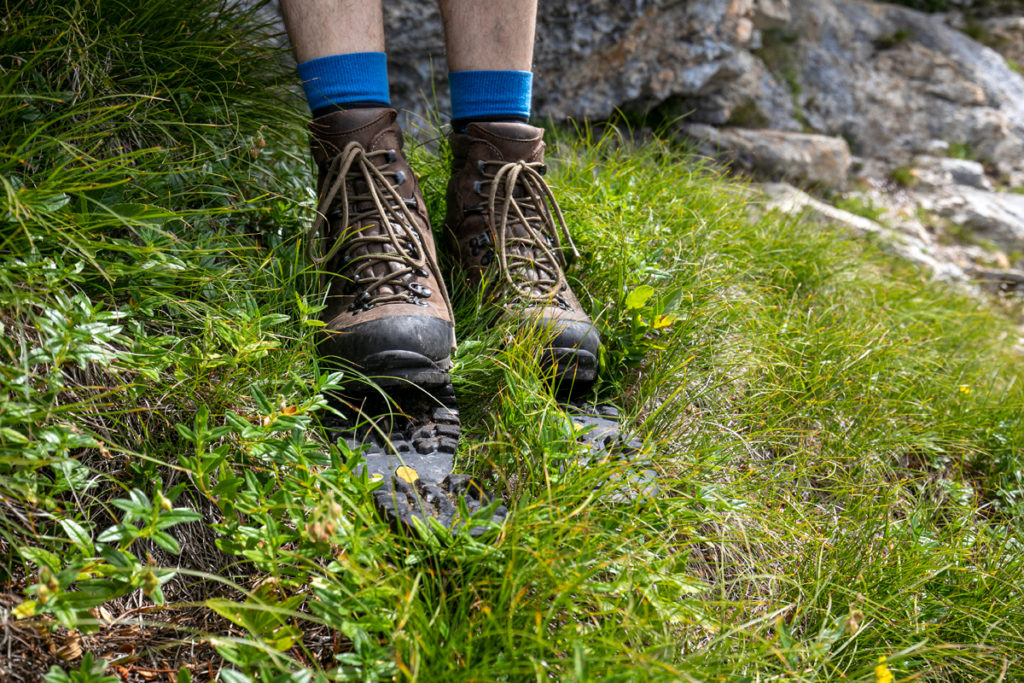
The second group, meanwhile, visited Breginj. The village is situated very close to the Italian border. Here the group visited Mazora Museum Collection, an impressive private collection with 11,000 exhibits from the surrounding area and with an emphasis on both world wars. Breginj also houses the Breginj Museum, a curiosity and one of the rare examples of preserved construction of stone two-storey houses intertwined with porches. After the earthquake that destroyed most of the houses on this side of the border, the houses were replaced with prefabricated ones. The neighboring Italians, chose a different approach and mostly preserved the old villages. The visit to Breginj was followed by a stop in the village of Logje, where the Last Museum of Contemporary Art resides. It is led by visual artist Damijan Kracina, one of the members of the Society for Domestic Research. The cold Nadiža river offered a nice opportunity for cooling down after a long day.
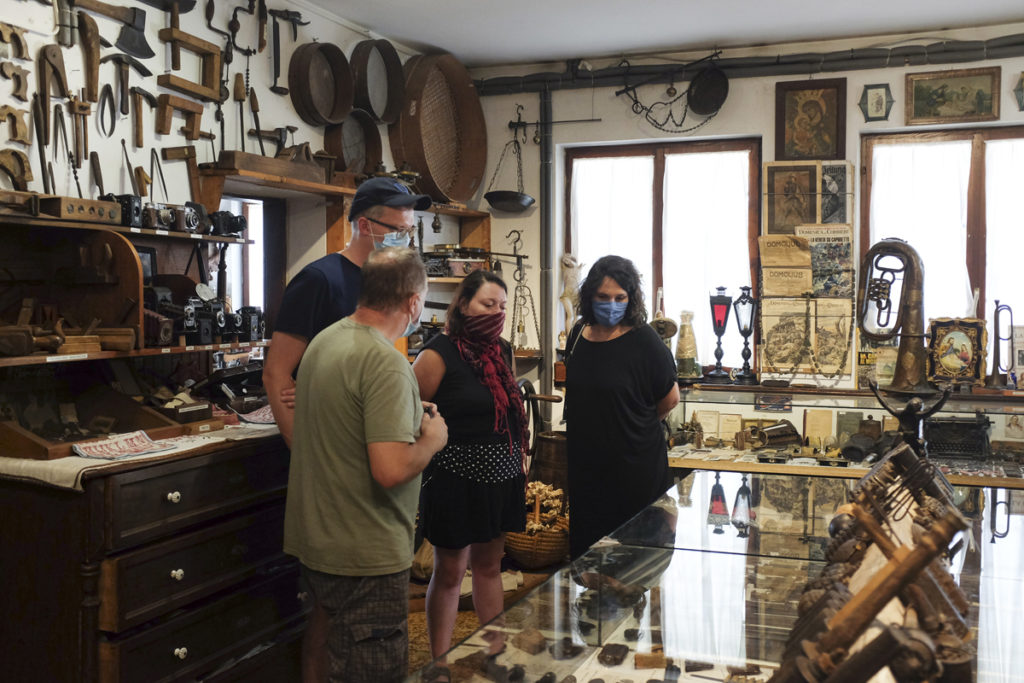
Activities also continued in the PIFcamp base: Saša and Tilen Sepič spent Thursday morning in the surrounding forests, where they continued recording inaudible and invisible landscapes of fungi and microbes with geophones, hydrophones, microscope, thermal and infrared camera. The videos will be part of Saša’s MycoMythologies project, a series of ontogenetic mythological stories, video essays, and machines. The series explores the flow of substances in the fungi mycelium. These serve as an inspiration for a new myth-building practice that would enable us to think differently about the conditions and possibilities of living in capitalist ruins.
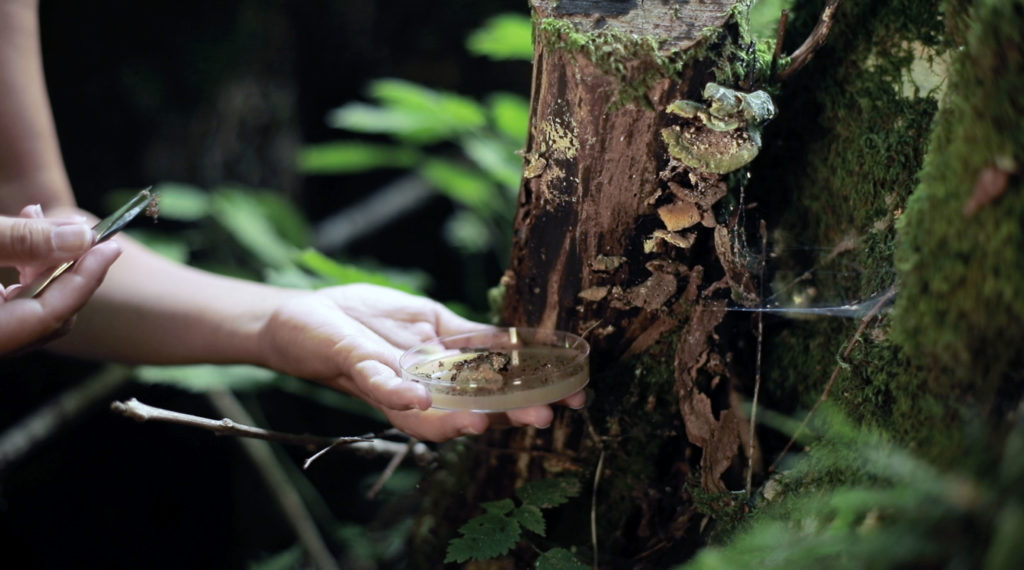
Klemens Kohlweis continued his media archaeological research into EPROM chips (erasable programmable read-only memory), which were used from the 80s to the mid-90s, and are found also in digital drum machines used in Pop music of the time. The characteristic of EPROM chips is that the silicon part is visible and exposed, and the data can be erased with UV light. This process of deletion can take multiple hours, during which you can “play” the chips, explains Klemens, and observe how the data “sounds” when being destroyed.
Klemens also participated in the project of Saša Spačal, who is developing the Light Reader workshop, video tutorial and a lab book. For the lab book Klemens prepared two schematics of the electrical circuit. The Light Reader is a simple physical interface for triggering sound using light. Its technological principle was developed and used in Saša’s biotechnological sound art installation Mycophone_unison in 2013. The Light Reader is now also available on Github: https://github.com/okelk/Light-Reader
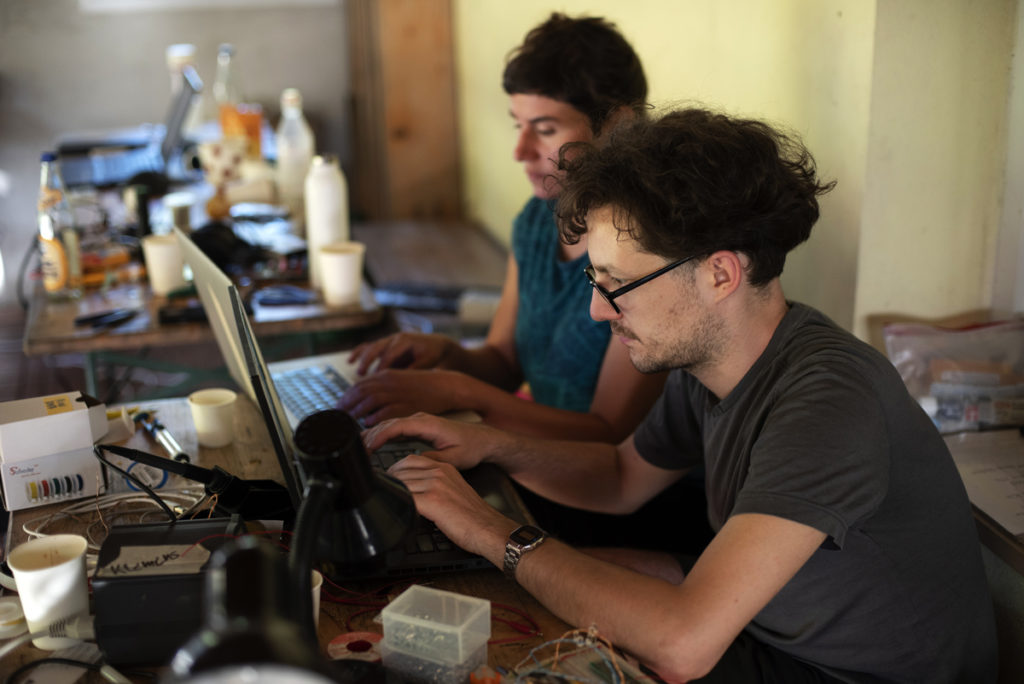
Luka completed his solar powered rotator for houseplants, while Blaž tested the DIY ambisonic dome, which we have already reported on in previous posts.
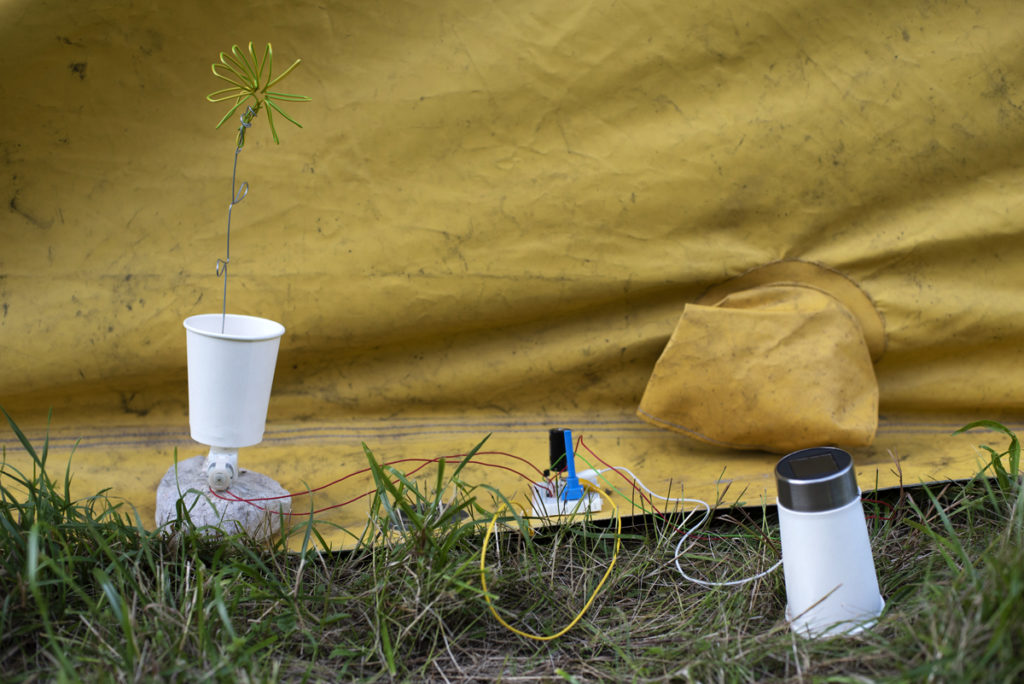
Andrew Quitmeyer, a mentor for an interactive ant-farms workshop, gave an online lecture in the afternoon on the safe placement of ant colonies on the body. Thursday was dedicated also to searching for anthills in the area and gathering ants.
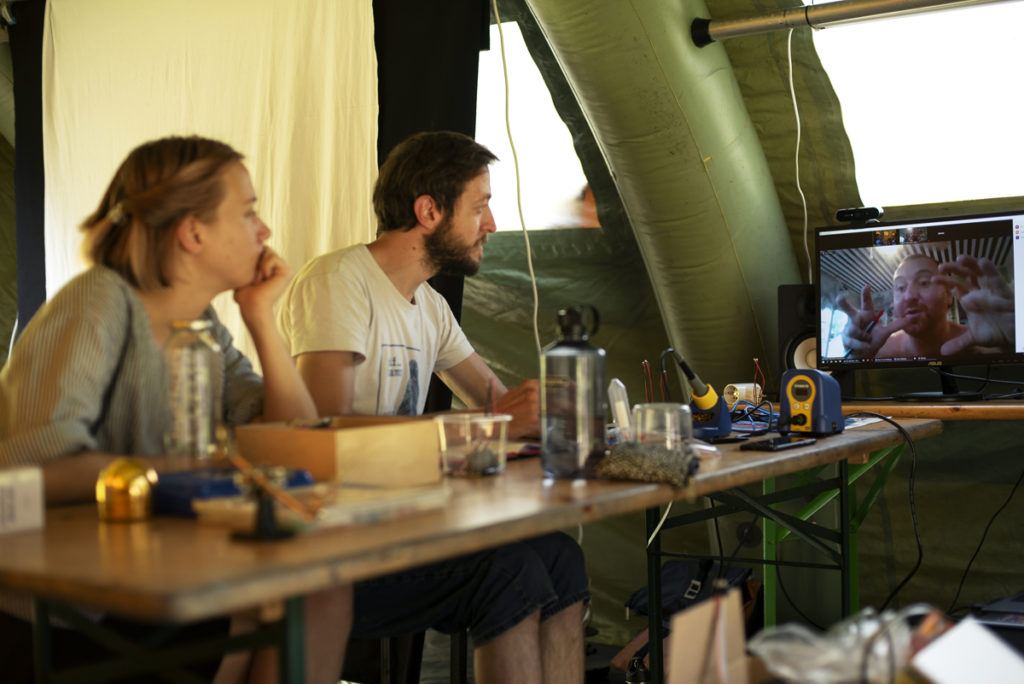
Yet another productive day at PIFcamp was concluded by an evening sitting by a fire, playing cards, and enjoying improvised video and laser projections.
